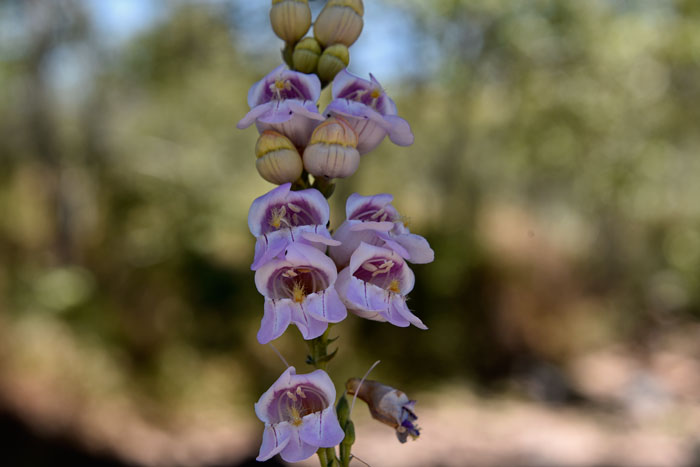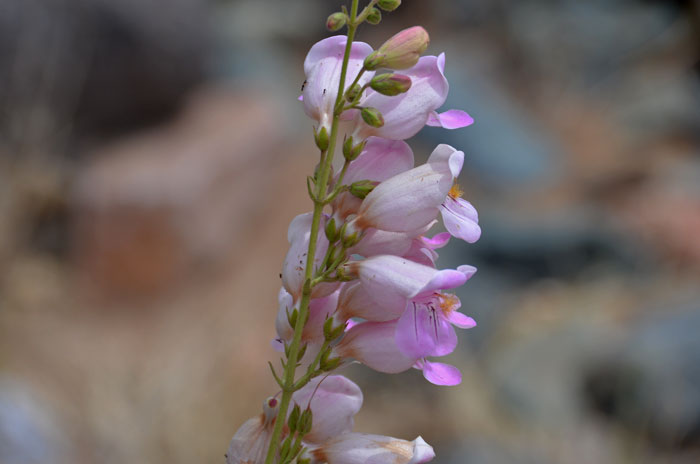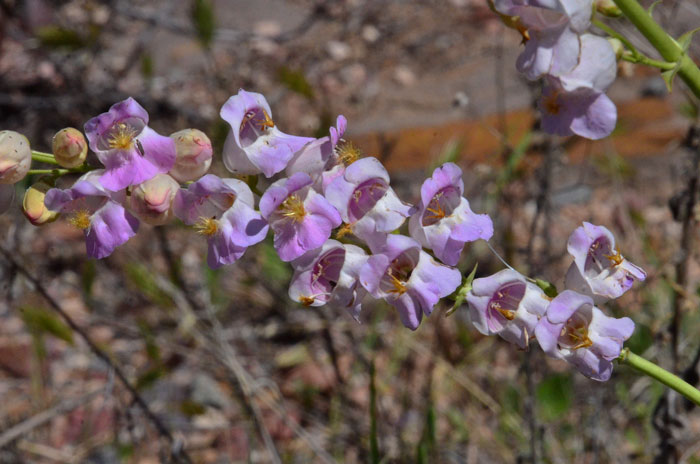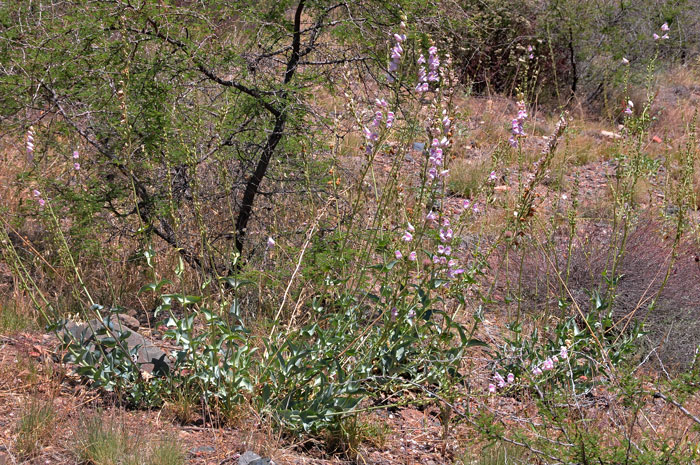Penstemon palmeri, Palmer's Penstemon




Scientific Name: Penstemon palmeri
Common Name: Palmer's Penstemon
Also Called: Palmer Penstemon
Family: Scrophulariaceae, Figwort or Snapdragon Family - Moving to Plantaginaceae
Synonyms: ()
Status: Native
Duration: Perennial
Size: Up to 4 or 5 feet more or less.
Growth Form: Forb/herb, subshrub; plants glabrous, glaucous; suffrutescent
Leaves: Green, light green, grayish; basal and cauline leaves; leaves paired; leaf shape variable, oblong, triangular, leaves clasping; margins dentate.
Flower Color: Pink, pale pink, lavender; flowers showy, fragrant; flowering stalk is glandular hairy; corolla inflated (puffed-up) from tube; stamenoid exserted, long-bearded, yellow; flowers along stems narrow clusters.
Flowering Season: March to September; May to June in California and Texas.
Elevation: 3,500 to 6,500 feet in Arizona and Texas; 3,500 to 7,000 feet in California.
Habitat Preferences: Often in washes, roadsides, canyon floors, rocky-areas, creosote-bush, chaparral, sagebrush and pinyon communities.
Recorded Range: Penstemon palmeri is found in the southwestern and parts of the northwestern United States in; AZ, CA, ID, NM, NV, UT. In Arizona is occurs in the northern ½ of the state with few records in Apache County.
North America & US County Distribution Map for Penstemon palmeri.
U.S. Weed Information: No information available.
Invasive/Noxious Weed Information: No information available.
Wetland Indicator: No information available.
Threatened/Endangered Information: No information available.
In the Southwestern United States, Arizona there are 43 species of Penstemon, in California there are 55 species, Nevada has 50 species, New Mexico has 47 species, Texas has 24 species, Utah has 73 species. All data is approximate and subject to taxonomic changes.
There are 3 varieties in Penstemon palmeri;
Penstemon palmeri var. eglandulosus, Scented Beardtongue (AZ, UT);
Penstemon palmeri var. macranthus, Scented Beardtongue (NV);
Penstemon palmeri var. palmeri, Palmer's Penstemon (AZ, CA, ID, NM, NV, UT).
Comments:Penstemon palmeri has large showy fragrant flowers attractive to native honey bees.
Penstemon palmeri has been made into a poultice and applied to snakebite sores by North American indigenous peoples.
Navajo, Kayenta Drug, Snake Bite Remedy, Poultice of plant applied to snakebite sores.
See ethno-botanical uses at Native American Ethnobotany, University of Michigan, Dearborn.

